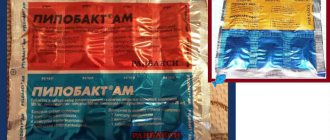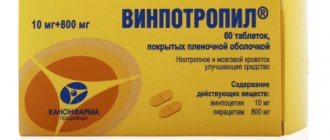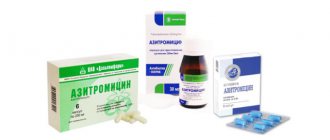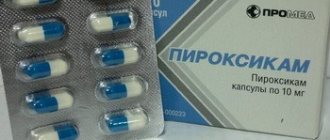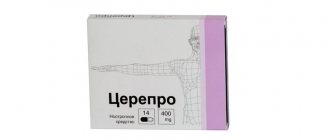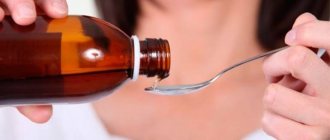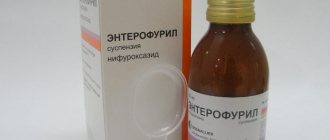Photo: Flucostat (tablets, capsules 150 mg.) - instructions for use
Flucostat is an antifungal drug that differs from other similar drugs in its broad spectrum of action. The greatest activity is observed in the treatment of a particular type of fungus from the genus called Candida, which causes thrush. But this triazole compound also fights other fungal infections very effectively.
The active substance of flucostat is fluconazole, which in different dosages is the main component of tablets, solutions and suppositories. The drug, thanks to its thoughtful composition, does not harm the natural microflora of the intestines and the entire digestive tract, as well as the vagina. That is why it is used more often than other drugs to treat external and internal fungal infections.
- Release form of the drug
- Indications for use Doses required for treatment
- Recommendations
- Flucostat during pregnancy
- Benefits of using capsules
Compound
Dosage forms of Flucostat:
- capsules: 0.05 g each - opaque, with a pinkish-brown cap and a light pink body, size No. 2; 0.15 g each - size No. 0, with a white body and cap, opaque (7 capsules of 0.05 g each or 1, 2, 3 or 6 capsules of 0.15 g each, in strip packaging; 1 package in a cardboard box );
- solution for infusion: colorless, transparent (50 ml in clear glass bottles; 1 bottle in a cardboard box).
Composition of 1 capsule:
- active substance: fluconazole – 0.05 or 0.15 g;
- auxiliary components: milk sugar (lactose) – 0.0494 or 0.1474 g; corn starch – 0.0164 or 0.049 g; aerosil (colloidal silicon dioxide) – 0.00012 or 0.00036 g; magnesium stearate – 0.00096 or 0.0028 g; sodium lauryl sulfate – 0.00012 or 0.00036 g;
- 0.05 g capsule: body – titanium dioxide (E 171) – 3%; red iron oxide (E 172) – 0.0857%; gelatin – up to 100%; cap – gelatin – up to 100%; red iron oxide (E 172) – 0.7286%; titanium dioxide (E 171) – 2%;
- 0.15 g capsule: body and cap – gelatin – up to 100%, titanium dioxide (E 171) – 2%.
Composition of 1 ml solution:
- active substance: fluconazole – 0.002 g;
- auxiliary components: sodium chloride – 0.009 g, water for injection – up to 1 ml.
In what cases is Flucostat effective?
The main medical indication for taking Flucostat capsules is etiotropic therapy (treatment aimed at destroying the causative agent of the infectious process) of fungal diseases caused by pathogens sensitive to the active substance of the drug:
- Genital candidiasis (thrush) with a severe infectious process that cannot be treated with topical antifungal drugs, including vaginal candidiasis in women or the glans penis in men.
- Candidiasis of the mucous membranes, including those localized in the oral cavity, pharynx, esophagus, trachea, and structures of the urinary system.
- Various fungal skin infections, including mycoses of the feet, trunk, groin area, onychomycosis, lichen planus.
- Generalized candidiasis is the spread of an infectious process in various organs and tissues, which often develops against the background of a pronounced decrease in the functional activity of the immune system.
- Cryptococcosis, including fungal infection of the membranes of the brain. The drug is used to treat this fungal disease in patients with normal and reduced immunity.
- A group of fungal infections represented by deep endemic mycoses, including paracoccidioidomycosis, coccidioidomycosis, histoplasmosis, sporotrichosis in patients with normal or reduced immunity.
The drug is also used to prevent the development of fungal infections in patients with reduced functional activity of the immune system due to the oncological process and treatment with cytostatics.
When is it prescribed?
The drug is prescribed in the following conditions:
- mycosis;
- pityriasis versicolor;
- cryptococcosis;
- onychomycosis;
- candidiasis;
- prevention of fungal diseases;
- thrush;
- fungal infections after chemotherapy.
The drug is also prescribed as a prophylaxis during treatment with antibiotics.
Mechanism of action
The fluconazole contained in the drug belongs to the class of triazole drugs. Its effect on fungal cells is manifested by the fact that it suppresses the production of sterols by their membranes. Ultimately, the drug destroys pathogenic fungi. Studies have confirmed the effectiveness of this remedy against:
- fungi that cause thrush;
- cryptococci;
- trichophytes;
- causative agents of opportunistic mycoses (this applies primarily to fungi belonging to the genus Candida).
The medicine also affects microscopic fungal spores. After oral administration, the active component begins to be absorbed into the blood, reaching its maximum concentration (if the medicine was taken on an empty stomach) after 0.5-1.5 hours. It is distributed throughout the body. The bioavailability of the drug reaches 90%.
The active substance undergoes metabolism to a small extent. It is excreted from the body mainly by the kidneys, mostly unchanged (80%). The half-life is on average 30 hours. Fluconazole can accumulate in certain tissues of the body (especially in the nails), where its presence can be detected even six months after the end of treatment.
The drug does not have a negative effect on the microflora of the female reproductive system and digestive tract.
Analogs
There are drugs with similar effects:
- medoflucon;
- Vfend;
- itracon;
- mycosist;
- mycomax;
- irunin;
- orungal;
- mycoflucan;
- fluconazole.
All of these medications have antifungal effects. The only difference is the price, auxiliary components, and country of production. Among domestic drugs – Fluconazole. It is cheaper than Flucostat, but the effect is similar.
Dosage and method of administration
Flucostat capsules are intended for oral administration. Do not chew them and wash them down with plenty of water. The regimen of use of the drug and dosage depend on medical indications:
- Thrush or balanitis - 150 mg once, and then to prevent relapse 150 mg once a month for 4-12 months;
- Pityriasis versicolor – 50 mg once a day for a period of time from 2 to 4 weeks.
- Candidiasis of mucous membranes of various localizations - 50-150 mg per day for a period of time from 2 weeks to 1 month.
- Skin mycoses of various localizations - 150 mg once a week or 50 mg once a day. The duration of the course of therapy varies from 2 to 4 weeks; if the fungal infection is localized on the skin of the feet, it can reach 6 weeks.
- Candidiasis of the mucous membranes of the reproductive system in men and women - 150 mg is taken once. To prevent exacerbation of this fungal infection, the drug is used in a dosage of 150 mg once a month for a period of time that varies from 4 to 12 months.
- Atrophic candidiasis of the oral cavity, the development of which was provoked by wearing dentures - 50 mg once a day for 10-14 days.
- Cryptococcal infection, generalized candidiasis - on the first day of the course of therapy, the dosage is 400 mg per day, then it ranges from 200 to 400 mg per day, depending on the severity of the fungal pathology.
- Prevention of the development of oral candidiasis in patients with concomitant AIDS after completion of a course of antifungal therapy - 150 mg once every 7 days.
- Deep endemic mycoses - dosage varies from 200 to 400 mg per day, duration of therapy can vary from several months to one and a half years.
- Prevention of the development of candidiasis in patients with cancer pathology during radiation or chemotherapy - the dosage varies from 50 to 400 mg per day.
- Prevention of cryptococcal meningitis in patients with reduced immune activity due to AIDS - 200 mg per day for a long period of time.
The tablet form of Flucostat can also be used in pediatric practice, since fungal infections in children develop and occur even more often than in adults. The dosage is selected individually for each child, based on his anthropometric indicators (in particular weight) and clinical diagnosis, which should be confirmed by microscopic examination.
The following treatment regimens for pediatricians exist:
- candidiasis of the mucous membranes - 6 mg per 1 kg of patient weight on day 1, and then 3 mg per kg until the results of microbiological studies are negative;
- cryptococcosis and systemic candidiasis – 6-12 mg/kg, depending on the severity of the disease;
- for preventive purposes against the background of reduced immune abilities of the body - 3-12 mg per 1 kg of weight per day (the exact amount of the pharmaceutical drug should be calculated based on the level of leukopenia in a blood test).
Flucostat instructions for use for thrush in women
How to take Flucostat for thrush, each patient can decide independently or find out in consultation with a qualified specialist, since there are different treatment regimens for fungal infections of the urogenital area in women.
The quantity and frequency of application depends on the manifestations of the pathological process, the form of the disease and associated complications:
- An uncomplicated form of candidiasis that occurs for the first time with mild or moderate symptoms - 1 capsule (150 mg of Flucostat) once.
- Complicated form of thrush with severe symptoms or against the background of concomitant chronic diseases - 150 mg of the drug on days 1 and 4 of conservative therapy.
- A recurrent form of candidiasis in women, which manifests itself at least 4 times during the year - 150 mg in three doses, on the 1st, 4th and 7th day of sanitation.
It is also necessary to treat the sexual partner - 150 mg once. This form of fungal pathology requires maintenance therapy to prevent repeated episodes of the disease. For this purpose, 150 mg tablets are used once a week for 6 months.
Flucostat during pregnancy (and lactation)
During the use of the drug, the active ingredients are absorbed into the main bloodstream and distributed throughout the woman’s body, evenly deposited in biological fluids. That is why the use of the antifungal drug Flucostat during pregnancy is allowed only for health reasons (for example, in the case of severe, generalized infections that threaten the life of the expectant mother and fetus).
If there is a need to undergo a course of conservative therapy during breastfeeding, then the child should be weaned from the breast and mother’s milk, because even in such a specific secretion traces of biologically active substances that are part of the enteral and parneteral forms of Flucostat are found.
Release form of the drug
Flucostat is available in different forms - there are suppositories and a solution for intravenous injections, but the most popular form is capsules. There are also several options here:
Photo: Flucostat in capsules
- 50 mg. the active drug in the form of opaque pink capsules containing white powder inside; This option is packaged with seven tablets in each contour blister; one standard package contains only one such blister;
- 150 mg. the active drug is also in the form of capsules, but opaque white ones, containing the same white powder inside; standard packaging consists of only one blister pack with only one capsule; there is an option with two capsules in a box.
For complete treatment, the most popular dosage is 150 mg, since this amount of the active substance is just enough to rid the body of developing fungal infections.
Side effects
Flucostat, according to reviews, is well tolerated by patients. However, when using the drug there may be risks of the following side effects:
- Allergic reactions: urticaria, angioedema, anaphylactic shock, Lyell's syndrome, Stevens-Johnson syndrome;
- From the nervous system: dizziness, convulsions, headache;
- From the cardiovascular system: ventricular fibrillation and flutter, prolongation of the QT interval, agranulocytosis, neutropenia, leukopenia, thrombocytopenia;
- From the gastrointestinal tract and hepatobiliary system: nausea, vomiting, stool disorders, changes in taste, pain in the abdominal and epigastric areas, jaundice, flatulence, hepatonecrosis, increased levels of bilirubin and liver enzymes;
- Others: increased plasma triglycerides and cholesterol, decreased potassium levels, baldness.
When using excessive doses of Flucostat, hallucinations and paranoid behavior may occur. There is no antidote to the drug. In case of overdose, symptomatic treatment is carried out: gastric lavage, administration of enterosorbent drugs. In order to reduce the concentration of the active substance Flucostat in the blood plasma, forced diuresis and hemodialysis are possible.
Contraindications
- Do not prescribe to patients with known intolerance to fluconazole and other azole compounds.
- Capsules are not used to treat patients who are lactose intolerant, including patients with glucose-galactose malabsorption syndrome, lactase deficiency and galactosemia.
- Should not be administered to patients receiving drugs that prolong the QT interval.
- Capsules in pediatric practice are used only for the treatment of children over 3 years of age.
Caution should be exercised when prescribing Flucostat to patients suffering from impaired renal and liver function, chronic alcoholism, as well as patients with a high risk of developing arrhythmia and patients receiving drugs that have hepatotoxic effects. Flucostat is prescribed with caution to patients with acquired immunodeficiency syndrome (since in this category of patients the risk of developing undesirable effects is higher).
Drug interactions
The simultaneous use of Flucostat (as well as Flucostat analogues) with terfenadine and astemizole is not allowed. When the above substances are combined with fluconazole, the effectiveness of coumarin anticoagulants may change.
According to reviews of Flucostat, its use simultaneously with sulfonylurea derivatives increases the risk of hypoglycemia.
Cisapride, together with the use of Flucostat, leads to side effects from the heart and blood vessels.
The instructions given for Flucostat are not a guide to self-administration of the drug without consulting a doctor.
special instructions
The use of the drug during pregnancy is allowed strictly as prescribed by a doctor only if the benefits to the mother outweigh the possible risks to the development of the fetus. If you need to take medication during lactation, you must stop breastfeeding until the end of treatment.
This product is not recommended to be combined with alcohol.
During treatment, it is better to refrain from driving a car or other potentially dangerous technical device, since Flucostat can cause dizziness and changes in muscle tone.
Who should not take it
The drug is contraindicated:
- children under three years old;
- with galactosemia;
- with increased sensitivity;
- with lactose intolerance;
- with renal failure;
- with liver failure;
- with alcohol addiction;
- during treatment with hepatoxic drugs;
- with extensive arrhythmia.
Sometimes unpleasant actions occur during treatment.
Flucostat: reviews of women and doctors
Some reviews from doctors about the drug:
- Nikonorova T.V. Ultrasound doctor. A good drug for thrush, but you need the correct regimen for using this drug; it helps with chronic recurrent variants of this disease. Can be used for a long time, but after consulting a doctor. 150 mg once a week for 1-3 months, a simple dosage regimen for recurrent thrush.
- Lapin R.V. Surgeon. An excellent and effective drug, which is an integral drug in a doctor’s practice for the treatment of candidiasis of various localizations. It shows its activity in a short time. Does not cause complications or allergies. Easy to carry. I will recommend this drug to everyone. Protect yourself from thrush.
- Nazemtseva R.K. Gynecologist. Flucostat is often prescribed to women with candida infections to suppress the growth of fungi in the intestines, which are a reservoir for fungi. In parallel with local antimycotic therapy, we get a positive result. I also prescribe a drug for the prevention of candidiasis after antibiotic therapy.
We share real reviews from women:
- Elena. A good drug, I took a course of antibiotics for a female disease. During the appointment, the doctor recommended that I take Flucostat. I didn’t even notice that I was starting to get thrush from taking antibiotics. Previously, prevention against thrush was done at the end of treatment. The drug is easy to use, without side effects and has a reasonable price. Now I will only use it in similar cases.
- Marina. I took suppositories, not pills. It feels neutral, there is no discomfort when administering the drug. The price is not cheap, but the result is worth the candle. I used the complex as prescribed by the doctor. The result was visible by the end of using the course. I recommend this medicine to those who are struggling with thrush, but on the recommendation of a doctor.
- Yana. Helps even with advanced thrush. 1 capsule is usually enough for me to forget about this problem. In extreme cases, I drink another one a week later and the result is guaranteed. For me this is the best way out, because... I really don’t like using suppositories and vaginal tablets.
You can leave your feedback in the comments.
Advantages
At this point in time, the drug has many advantages, so treating thrush has become accessible and effective. The advantages include the following:
- Flucostat begins to act quickly: after 1-2 hours;
- its effect extends not only to the area where thrush appeared, but also to the entire body as a whole;
- for mild forms of the disease, a one-time dose is sufficient;
- ease of use;
- compatible with any contraceptive;
- the drug eliminates the cause of the disease, not its symptoms.
- The most important advantage is the price.
Flucostat is sold without a doctor's prescription, is available for sale and is quite inexpensive.
Flucostat or Diflucan - which is better for thrush?
- Diflucan is an imported drug that is produced in such advanced countries as the United States of America and France, in contrast to the domestic Flucostat;
- Flucostat is an original drug that appeared on the pharmaceutical market at the end of the last century;
- Flucostat contains some chemical components that are not found in Diflucan.
Based on the differences between these pharmaceuticals, it is difficult to unequivocally answer which is better for thrush - Flucostat or Diflucan. Of course, the credibility of an imported drug is greater, especially since production in such large countries allows you to be confident in the high quality of medicinal products. On the other hand, the price of Flucostat is 10, and sometimes more, times less than the cost of Diflucan, which in our mentality is also valued very highly, so the choice: what to use - Flucostat or Diflucan - should be made independently.
Thrush in women Suppositories for thrush: a list of cheap and effective ones for 2021 Oral candidiasis Esophageal candidiasis Use of ASD fraction 2: benefits and harm to humans Hepatitis C: first signs and treatment regimen
